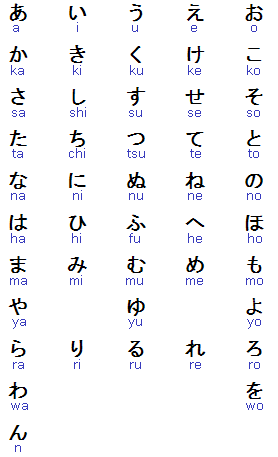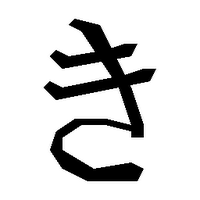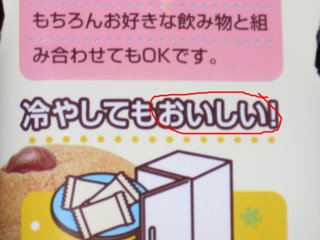Bizarre Teaching Moment #3: Stop the Madness!
~Salutations, readers. The Bizarre Teaching Moment for today comes courtesy of my two most advanced students, a pair of boys who lived in Michigan until three years ago. Because their English is so good, I have a lot of fun in the class. So far, we've done lessons in diverse topics such as cryptography, pirates, and even a unit on car chases! Aside from their good English, they're both extremely intelligent and are easy to engage in conversation. Oh, they're also completely obsessed with explosions and bombs (does that remind you of anyone?).
One thing that we do in every class is read the latest installment of "Prince Valiant", a comic strip that appears in the Sunday edition of many American newspapers, including the Raleigh News & Disturber. As a Knight of the Round Table in Arthurian England, Prince Valiant has been kicking around for over sixty real-life years (amazingly, Val's wife, Aleta, hasn't aged a day), and somehow gets caught up in every major historical event of the last two millennia. Suspension of reality aside, Prince Valiant is my favorite weekly American comic strip, for several reasons: a) great artwork, b) an ongoing plot with multiple story arcs, and c) excellent writing with lots of advanced words
Here's the strip we read in our last class, from May 7th 2006 (click on it for a better look). Thanks for mailing it to me, Mom!:
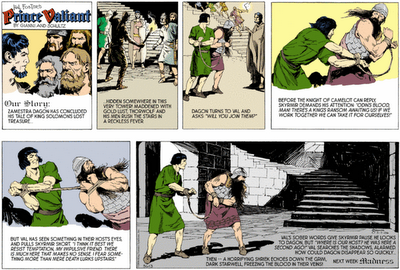 ^ [Synopsis: Val has been captured by Vikings and was being used as a human shield, along with the maimed former chieftain, Skyrmir. But now the Vikings have abandoned them in a mad quest for treasure! Incidentally, Skyrmir is the boys' favorite character, and they refer to the comic as "Prince Skyrmir". And they call me crazy...]
^ [Synopsis: Val has been captured by Vikings and was being used as a human shield, along with the maimed former chieftain, Skyrmir. But now the Vikings have abandoned them in a mad quest for treasure! Incidentally, Skyrmir is the boys' favorite character, and they refer to the comic as "Prince Skyrmir". And they call me crazy...]To help with some of the more difficult words and terms ("A horrifying shriek echoes down the grim, dark stairwell, freezing the blood in their veins!"), I always create a set of vocabulary cards before each class. Previously, I attempted to make small illustrations to elicit some of the terms, but my artwork is so bad that the boys always laughed at it. So now I make them draw the pictures! Mwahahahaha!
Comics in Japan, known as manga (your Word of the Post!) are big business and are much more mainstream than they are in America--I see lots of adults reading manga on trains and buses. You might think that's strange or childish, but from what I can tell, the breadth of manga topics is much, much larger than the superhero or slapstick humor genres that stereotype American comics. All of the bookstores here have large sections devoted to manga of every possible genre you can think of.
Because the boys in my class enjoyed reading Prince Valiant so much, I decided to let them make their own. I photocopied a page from a Japanese manga and covered the words with paper, then made another copy...leaving a page without words for them to fill in. The page I used was from "Akira", a famous science fiction manga (later made into a movie) that I managed to acquire (an English translation, no less):
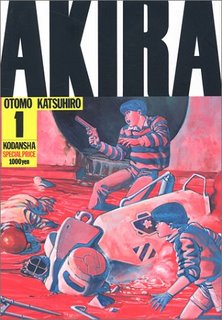 ^ The series is basically about superpowered children blowing up Tokyo...repeatedly. Interestingly, there is a student at my school named Akira, and whenever I say his name I can't help but laugh.
^ The series is basically about superpowered children blowing up Tokyo...repeatedly. Interestingly, there is a student at my school named Akira, and whenever I say his name I can't help but laugh.After giving the boys a few minutes to create their own dialogue, here is what they came up with (see below for zoomed-in images):
 ^ Since the pencil writing is difficult to see, I'll give you closeups of each panel:
^ Since the pencil writing is difficult to see, I'll give you closeups of each panel: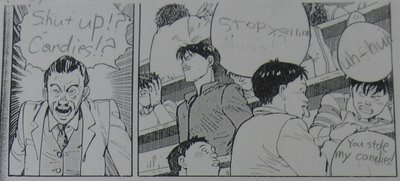 ^ Teacher: "Shut up?! Candies?!" Boy 1: "Stop yelling!" Boy 2: "You stole my candies!" Boy 3: "Uh-huh"
^ Teacher: "Shut up?! Candies?!" Boy 1: "Stop yelling!" Boy 2: "You stole my candies!" Boy 3: "Uh-huh" ^ Teacher: "This class will have zero on your tests, because I'll give questions that's unable to answer."
^ Teacher: "This class will have zero on your tests, because I'll give questions that's unable to answer." ^ Boy 1: "Do you have a reckless fever?" (reckless fever was a vocabulary term from Prince Valiant..."Thorwolf and his men rush the stairs in a reckless fever.") Boy 2: "He does." Boy 3: "Yeah."
^ Boy 1: "Do you have a reckless fever?" (reckless fever was a vocabulary term from Prince Valiant..."Thorwolf and his men rush the stairs in a reckless fever.") Boy 2: "He does." Boy 3: "Yeah."--I've got a fever, and the only prescription is more cowbell!!!
 ^ Boy 3: "We have to stop Mr. Dusto's madness!". Boy 1: "No! Mr. Mario!"
^ Boy 3: "We have to stop Mr. Dusto's madness!". Boy 1: "No! Mr. Mario!" ^ Teacher: "Ma-Mario!? Mama mia."
^ Teacher: "Ma-Mario!? Mama mia." ^ Teacher: "Mama mia! You have to die here!" Boy 2: "Shut up Luigi!"
^ Teacher: "Mama mia! You have to die here!" Boy 2: "Shut up Luigi!"~As you can see, the boys in the class are very "creative". I just wish that all of my classes were this much fun. In just a few hours I have to deal with a class of six five-year-olds (they're more like monkey-mosquito hybrids). Wish me luck!
Comments are appreciated. ~Oyasumi!





